“The cows milk better off the high
Andrew Barlass Methven dairy farmer

germinal.co.nz Seed Catalogue Trust quality pasture
sugar grass.”
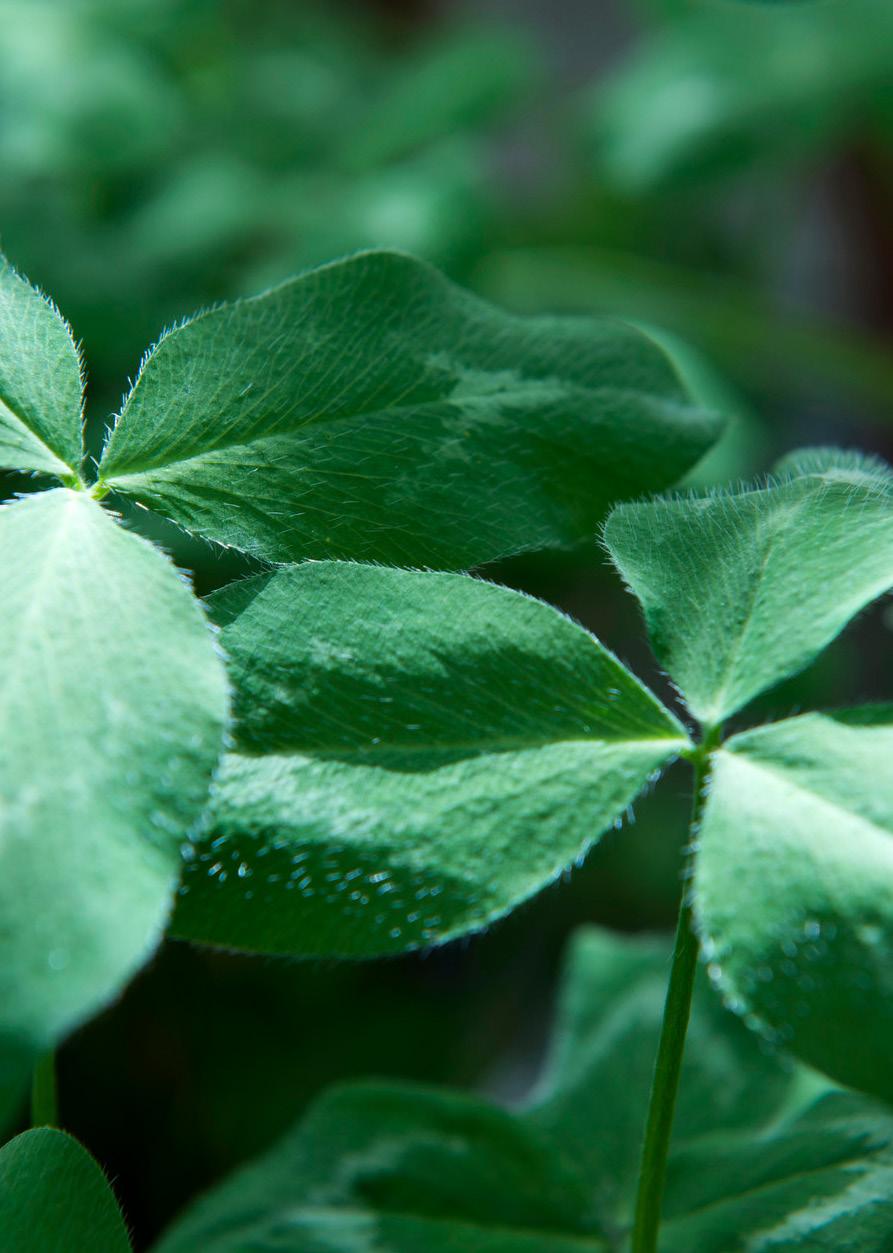
2007. Ryegrasses with increased water-soluble carbohydrate: evaluating the potential for grazing dairy cows in New Zealand. Proceedings of the New Zealand Grassland Association 69: 179 - 185.
7 Craig, H.; Fennessy, P.; McLean, N.; Chuah, J.; Campbell, A. 2014. High Sugar Ryegrass. Abacus Bio Limited.
8 British Seed Houses. 2012. Aber High Sugar Grasses trial work was conducted at the Institute of Biological, Environmental and Rural Sciences (IBERS) and on commercial farms.
9 Tavendale, M.H.; Pacheco, D.; Lane, G.A.; Fraser, K.;Death, A.F.; Burke, J.L.; Hickey, M.J.; Cosgrove, G.P. 2006. The effects of ryegrass varieties differing in soluble sugar content on the rumen fermentation of amino acids and consequences for milk flavour chemistry. Proceedings of the New Zealand Grassland Association 68: 261 - 265.
10 Marshall, A.H., Rascle, C., Abberton, M.T., Michaelson-Yeates, T.P.T. & Rhodes, I. 2001 Introgression as a route to improved drough tolerance in white clover (Trifolium repens L.). Journal of Agronomy and Crop Science 187: 11 - 18
Contents Introduction 02 Benefits of Aber® High Sugar Grass 02 – 07 Aber® High Sugar Grasses 08 – 14 Aber® Clover range 15 – 20
1 Cosgrove, G. P.; Koolaard, J.; Luo, D.; Burke, J. L.; Pacheco, D.
The
of high sugar ryegrasses. Proceedings
the
71: 187
193. 2 Van der Honing, Y, Alderman, G.
Ruminants.
Livestock
19:
278. 3 Plant
4 Walters, R. J. K.
D-value:
5 Jonker, A.; Molano, G.; Sandoval, E.; Taylor, P.; Antwi,
Cosgrove,
6
P.; Burke,
Death,
Reference Guide
2009.
composition
of
New Zealand Grassland Association,
-
1998.
In:
Production Science
217 -
Research (NZ) Ltd, 2014. Unpublished. Mean digestibility values were measured across five harvests at Ashburton from Oct 2013 to Mar 2014.
1984.
the significance of small differences on animal performance, In: The grass ley today. Proceedings 18th NIAB. Crop Conference, Cambridge, UK. pg 60 - 68.
C.;
G.P. 2014. Methane emissions by sheep offered high-sugar or conventional perennial ryegrass at two allowances. Proceedings of the New Zealand Society of Animal Production 74: 145 - 147.
Cosgrove, G.
J.L.;
A.F.; Hickey, M.J.; Pacheco, D.; Lane, G.A.
Innovative products with measurable benefits
Germinal is a sixth-generation family business committed to New Zealand’s agriculture industry since the early 2000s.
We are always looking to the future with 20% of our global team working in research and innovation. We have a unique knowledge of grassland with a focus on plant breeding to provide solutions for farmers which improve productivity and profitability, while addressing environmental impact.
We’ve created grass varieties which give you greater yields from fewer inputs while also reducing emissions from grazing livestock. Our high performing, climate smart Aber High Sugar Grasses (Aber HSG) are scientifically proven to reduce greenhouse gas emissions while more plant protein is converted into meat and milk.
We have worked hard to establish a successful ryegrass breeding programme focusing on the greatest areas of need for Kiwi farmers – breeding for New Zealand, in New Zealand.
Meanwhile, our clovers are bred for greater persistency and grazing tolerance, allowing them to fix atmospheric nitrogen more reliably and reduce the need to apply synthetic nitrogen.
Introduction
02
Germinal Horizon
Germinal Horizon is our dedicated research and innovation division that includes Germinal scientists placed at the world-class Institute of Biological, Environmental and Rural Sciences (IBERS) at Aberystwyth University.
Innovative new varieties bred either in New Zealand or at IBERS undergo trialing at our own research and development sites, including Germinal Horizon Lincoln here in Canterbury, New Zealand.
Through this research partnership and our on-farm trials, we’re bridging the gap from lab to paddock. Our well-established breeding population provides the ideal platform to continue developing the new agronomic and environmental traits Kiwi farmers need now and in the future.
Germinal Horizon is also heavily involved in the New Zealand Plant Breeding and Research Association (NZPBRA). The PBRA works to promote seed industry advances in R&D, breeding and other technologies, as well as regulating research and data of varieties in the market using world-leading evaluation protocols.
Supporting sustainable farming in New Zealand
We’re proud to work with leading Kiwi experts and farmers and are excited about the future of our plant breeding programme and the ground-breaking products we will deliver to create a more sustainable farming industry.
Germinal aims to be carbon zero across the globe by 2040 and we are committed to helping New Zealand farmers reach their environmental
We look forward to hearing from you soon.
Simon Larsen General Manager Germinal New Zealand

03 Germinal Horizon
Benefits of Aber High Sugar Grass
All farmers want their stock to thrive. Fundamental to that is palatable and nutritious pasture that can recover strongly between grazings, persist well, tolerate heavy traffic when wet underfoot and lift animal production. Aber
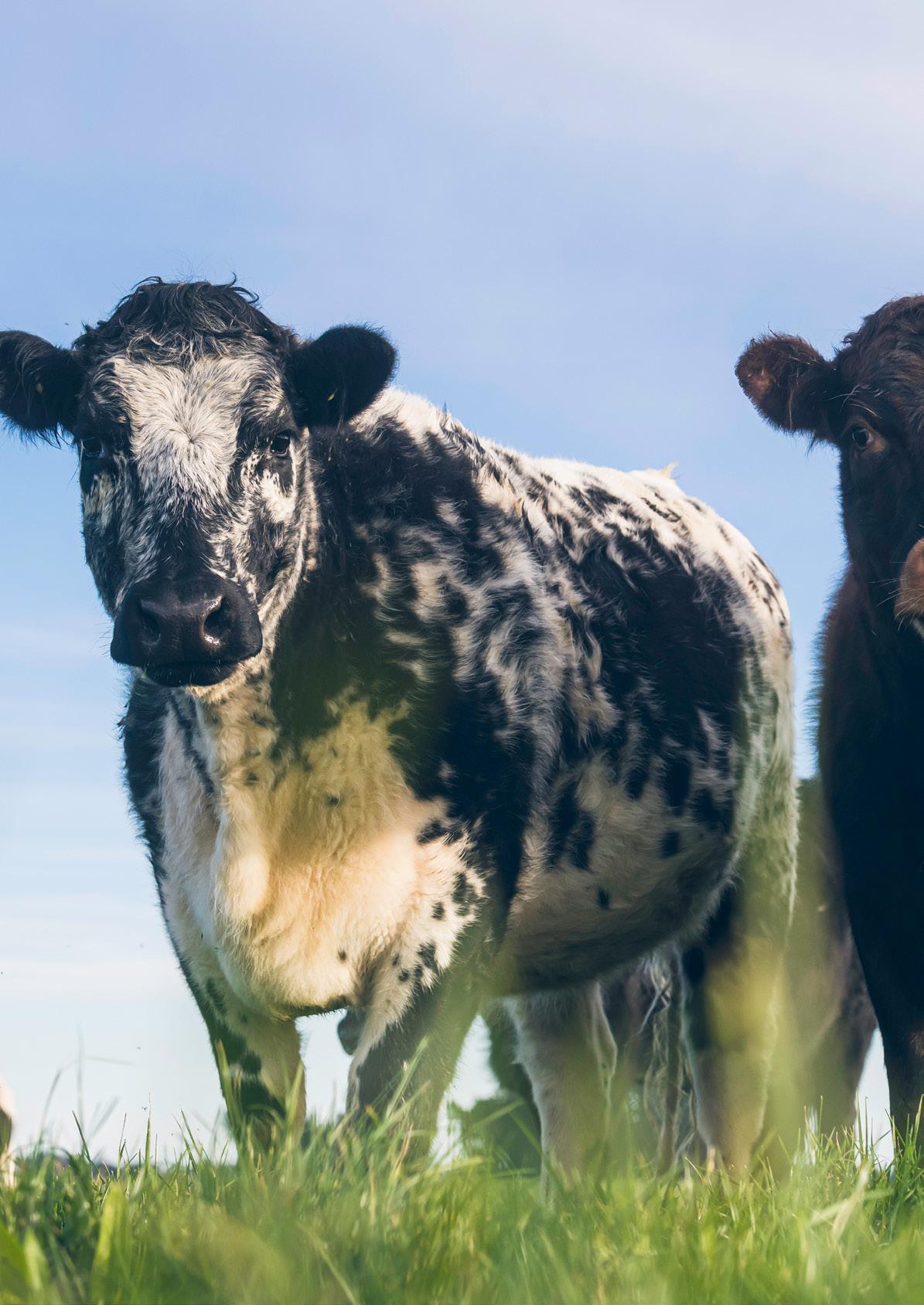
04
High Sugar Grasses have been developed to consistently
Improved digestibility • Better nutrition • Greater
• Enduring
• Environmental
offer: •
animal productivity
persistence
benefits
Benefits of Aber High Sugar Grass over standard ryegrass: • 5% gain in digestibility3 • An extra 1.4L of milk per day4 • 100g extra of liveweight per lamb per day4 • 200g extra liveweight per cow per day4
Benefits of Aber High Sugar Grass
Improved digestibility
Aber HSG varieties are more digestible because they contain lower levels of fibre and more water-soluble carbohydrates (WSC)1
Digestibility is a measure of how much of the feed eaten can be used by the animal for metabolic functions, including maintenance, growth, milk production and reproduction. Digestibility is measured in the laboratory using synthetic enzymes, which simulate the digestion process that occurs within an animal. The results are used to estimate the Digestible Organic Matter in the Drymatter % (DOMD) which is commonly referred to as digestibility. Higher digestibility values are beneficial because they drive higher feed energy values and higher intakes.
Metabolisable Energy (ME) is the amount of energy an animal can derive from a feed. It is measured in megajoules of energy per kilogram of forage drymatter (MJ/kgDM). There is a direct relationship between digestibility and metabolisable energy. One percentage increase in digestibility (DOMD) equates to an additional 0.15 MJ/kgDM of ME2
The perennial diploids AberMagic and AberGreen have been shown to have a digestibility of 5.0% and 5.5%, respectively, higher than another commercially available perennial ryegrass3. This difference is calculated to produce an extra 1.4 1.5 litres of milk per day from a dairy cow4
05
Benefits of Aber High Sugar Grass Available energy increased Higher WSC Lower nitrogen emissions Aber HSG helps capture more plant protein in the rumen
Better nutrition
Aber® High Sugar Grasses (HSG) are bred to produce more water-soluble carbohydrates (WSC) or sugar energy – delivering up to 17% more WSC than a standard diploid perennial ryegrass5 .
As well as more sugar energy, the research shows AberMagic has lower levels of fibre than control diploid and tetraploid ryegrasses and less crude protein than a tetraploid ryegrass. AberMagic’s lipid (wax, oil and fat) content, another source of energy, is 15% higher than a standard diploid ryegrass5.
Greater animal productivity
Farmers have seen Aber HSG pasture grazed ‘like a mower’, the lambs stay clean, the bulls more content and the deer reluctant to walk out for another paddock of conventional ryegrass.
An AgResearch trial showed cows fed Aber HSG produced 10% more autumn milksolids than cows fed a standard ryegrass6. Lambs grazing Aber HSG in a New Zealand trial finished 17% faster and 19% heavier than lambs grazing a standard NZ perennial ryegrass 7
Why the increase in production?
• Aber HSG’s improved digestibility increases the supply of readily available energy to assist in building more microbial protein in the rumen
• Aber HSG’s enhanced palatability encourages increased intake of dry matter
Scientists calculate a digestibility gain of 1% enables a dairy cow to produce an extra 0.28 litres per day, a beef animal to produce an extra 40 grams of meat per day and a lamb to gain an extra 20 grams of meat per day4 AberMagic and AberGreen, being 5.0% and 5.5% respectively higher in digestibility when compared with a standard ryegrass3, offer the potential for dairy cows, beef cattle and lambs to significantly increase milk or meat production.
06
Benefits of Aber High Sugar Grass
Enduring persistence
Pasture persistence is absolutely essential but is the easiest trait to lose when plant breeders strive to improve a plant’s forage value.
Aber® HSG plant breeders are well aware of this and make strong and dense root and tiller growth a priority.
A trial near Ashburton conducted by Plant Research (NZ) Ltd showed AberMagic and AberGreen outperformed a popular standard variety for yield in that trial’s third and final year, when yields commonly start to diminish3
Aber HSG pastures are reported to persist and perform on farms throughout New Zealand for over ten years, providing good ground cover and quicker recovery after grazing and dry spells.
Environmental benefits
Cattle, sheep and deer are poor converters of herbage protein, using only 20% for production with the rest wasted in faeces and urine.
The high level of WSC in Aber HSG varieties provides a more readily fermentable energy. Research at IBERS shows this increases the capture of rumen degradable protein into microbial protein and reduces the amount of N lost in urine8
New Zealand research shows rumen ammonia to be significantly lower in cows grazing Aber HSG9. The improved use of ruminal protein suggested by this data could provide environmental advantages in reducing nitrogen excretion9
The release of methane gas from sheep and cattle amounts to almost one third of New Zealand’s greenhouse gas emissions, and it is the largest contributor. Methane also accounts for over 40% of all emissions in terms of global warming potential.
The extra water-soluble sugars in Aber HSG can change rumen fermentation patterns, reducing methane emissions. An AgResearch trial showed 9% lower methane emissions from sheep fed AberMagic compared with a conventional diploid variety5
07
Benefits of Aber High Sugar Grass
The increased tiller density of AberGreen (left) compared with a standard NZ ryegrass (right), provides superior ground cover, meaning less room for weeds, greater tolerance to pugging and more light captured for grass growth.

AberGreen
AberGreen is a deep rooting ryegrass with very fine and dense tillers, making it a robust plant under all farm types.
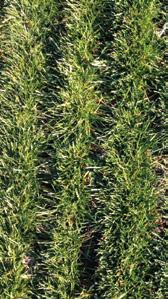
AberGreen is the first perennial ryegrass to offer the closest to optimum energy:protein ratio.
Quality of grass is just as important as total yield. A digestibility gain of 1% can improve animal performance by up to 5%. Animals have a higher voluntary intake with high digestibility and can absorb more energy from the feed, meaning animals fed good quality grass will yield more. An increase of 1% in digestibility has been measured to increase grass dry matter intake by 0.2 kg per cow per day. AberGreen is 5.5% higher in digestibility when compared to a standard ryegrass.
• Vigorous ground cover
• Optimum energy-to-protein balance
• Excellent digestibility under grazing and silage management
• Bred for enduring persistence
• Superior late spring yields
Abergreen
Seasonal growth curve (kg DM/ha) of AberGreen AR1 compared with a leading NZ diploid perennial ryegrass*
Seasonal growth curve (kg DM/ha) of AberGreen AR1 perennial ryegrass compared with a leading NZ diploid ryegrass* *Data taken from combined perennial ryegrass trials (partially irrigated) in Canterbury, New Zealand. Error bars show the LSD value when significant differences occurred (P<0.05).
08
Type Perennial Ryegrass Ploidy Diploid Sowing Rate 18 - 20Kg/ha Heading Date Late +17 days Endophyte LE and AR1
AberGreen
Standard NZ Ryegrass
Aber High Sugar Grasses
Leading
Winter Early
Summer
0 1 000 2 000 3 000 4 000 5 000 6
kg
NZ diploid PRG AberGreen AR1
Spring Late Spring
Autumn
000
DM/ha
Table 1.
Water-soluble carbohydrate concentration (% DM) of perennial ryegrass cultivars in year one of a Waikato NFVT trial (N215WAI).
Note: this trial included a total of 31 cultivars on which the statistical analysis was conducted, however six non-commercial lines have been removed from this presentation as requested by the NZPBRA.
Table 2. Metabolisable energy concentration (MJME/kg DM) of perennial ryegrass cultivars in year one of a Waikato NFVT trial (N215WAI).
Note: this trial included a total of 31 cultivars on which the statistical analysis was conducted, however six non-commercial lines have been removed from this presentation as requested by the NZPBRA.
Nutritive value data
Entry Winter Early Spring Late Spring Summer Autumn Year
AberGreen AR1 28.8 ch 31.4 ab 20.7 ab 20.4 a 18.1 a 23.1 a
AberMagic AR1 31.8 a 30.8 ae 21.7 a 18.4 b 16.4 b 22.7 ab
Bealey NEA2 31.6 ab 32.0 a 18.9 bi 16.3 df 16.1 bc 21.9 bc
Jeta AR1 29.3 cf 31.2 ac 20.6 ac 16.6 ce 15.8 bd 21.6 cd
Platform AR37 29.7 ac 29.6 bh 19.9 ad 17.0 cd 14.6 eh 21.1 ce
Viscount NEA4 29.3 cf 30.6 af 19.0 bh 15.2 fk 15.3 be 20.8 df
Base AR37 29.4 ce 30.6 af 19.6 bf 15.3 ek 14.6 ei 20.7 df
Hustle AR1 27.9 ck 30.0 ah 19.2 bg 16.0 dh 15.2 cf 20.7 eg
Trojan NEA2 29.0 cg 29.0 ci 18.7 cj 16.2 dg 14.8 dg 20.5 eh
Stellar AR1 25.9 kn 27.9 hj 18.8 bi 17.8 bc 15.5 be 20.4 eh
Halo AR37 28.4 ci 30.1 ah 18.4 dn 15.5 ej 14.7 eh 20.4 ei
Alto AR37 27.8 ck 30.2 ag 19.8 be 15.5 ej 13.9 gl 20.3 ei Ansa AR1 29.7 cd 29.2 dh 18.6 dk 15.2 fl 14.2 gj 20.3 fj
24Seven Happe 29.5 be 30.2 ag 16.9 jn 14.5 im 13.5 in 19.8 gl
Prospect AR37 27.6 el 28.5 fj 19.3 bg 15.4 ej 13.5 io 19.8 gl
Expo AR37 26.5 in 28.5 fj 18.5 dl 15.7 di 14.1 fk 19.7 gm
Bronsyn SE 27.0 gm 29.9 ah 18.5 dl 15.0 gm 13.2 jo 19.6 hm
Matrix SE 26.9 hm 29.6 bh 18.7 cj 15.1 fm 12.7 mo 19.5 im
Request AR37 26.1 kn 28.6 ej 18.4 dm 15.2 fm 13.3 jo 19.3 kn
One50 AR37 27.3 fm 29.0 di 16.8 ln 14.9 gm 13.4 jo 19.2 kn
Rely AR37 27.0 gm 28.5 fj 16.6 mn 14.8 hm 13.6 hm 19.1 kn
Excess AR37 26.0 kn 28.3 gj 17.8 fn 14.9 gm 13.1 ko 19.0 ln Moxie AR1 25.4 mo 27.2 ik 17.2 hn 14.9 gm 13.6 hm 18.8 mo
Bronte Happe 25.6 lo 27.2 ik 17.6 gn 14.0 km 12.5 no 18.3 no Ultra AR1 23.5 o 25.5 k 16.9 jn 14.7 hm 12.9 lo 17.9 o
F Test ** * *** *** *** *** ***
CV% 5.4 5.4 7.3 6 5.7 3.4
LSD 5% level 2.1 2.2 1.9 1.3 1.1 0.9
Trial Mean (kgDM/ha) 27.7 29.2 18.4 15.6 14.2 20
Entry Winter Early Spring Late Spring Summer Autumn Year
Bealey NEA2 13.3 a 13.4 a 12.3 bc 12.0 bc 12.5 ac 12.6 a
AberGreen AR1 12.6 bi 13.2 bd 12.3 bc 12.4 a 12.6 ab 12.6 ab
AberMagic AR1 12.4 di 13.1 bf 12.5 a 12.3 a 12.6 a 12.6 ac
Jeta AR1 13.2 ab 13.2 ab 12.3 bc 11.9 ej 12.4 cd 12.5 ad Halo AR37 12.8 ag 13.2 bd 12.3 bd 11.9 cf 12.4 bd 12.5 bd
Platform AR37 13.0 ad 13.1 bf 12.2 bf 12.0 ce 12.3 fk 12.4 ce Base AR37 12.9 af 13.2 ab 12.2 bf 11.9 cg 12.3 ei 12.4 ce Viscount NEA4 12.6 bi 13.1 bf 12.3 b 12.0 ce 12.4 df 12.4 df
Matrix SE 12.7 ag 13.1 be 12.3 bc 11.9 cf 12.2 hl 12.4 dg
Stellar AR1 12.5 bi 12.9 ek 12.1 el 12.1 b 12.4 ce 12.4 dg
Ansa AR1 12.7 bh 13.0 ci 12.2 di 11.8 fj 12.3 fi 12.3 eh Alto AR37 12.7 ag 13.1 bg 12.1 el 11.8 fk 12.2 in 12.3 ei
Trojan NEA2 12.8 ag 13.0 ek 12.1 el 11.7 hn 12.2 fk 12.3 ej
24Seven Happe 12.5 ci 13.1 bh 12.1 dj 11.8 hm 12.2 in 12.3 hl
Prospect AR37 12.5 bi 13.0 ek 12.2 ch 11.7 lo 12.2 gk 12.3 hm
Expo AR37 12.2 gj 12.9 hl 12.2 bf 11.9 cg 12.2 hm 12.2 hm
Request AR37 12.6 bi 12.9 hl 12.1 el 11.8 gl 12.1 mo 12.2 im
Ultra AR1 12.4 di 12.7 l 12.2 cg 11.8 hm 12.2 ko 12.2 in
One50 AR37 12.7 ag 13.0 dj 11.8 m 11.6 no 12.1 lo 12.2 in
Hustle AR1 12.3 ei 12.8 jl 12.1 fl 11.8 hn 12.2 im 12.2 in
Excess AR37 12.3 di 12.9 hl 12.2 cg 11.7 io 12.1 mo 12.2 jn
Bronte Happe 12.2 gj 12.8 kl 12.1 dk 11.8 fk 12.2 jn 12.2 jn
Rely AR37 12.6 bi 12.9 gl 11.9 m 11.7 ho 12.1 no 12.2 jn
Moxie AR1 12.7 bi 12.8 kl 11.9 m 11.6 o 12.0 op 12.1 mn
Bronsyn SE 12.2 fj 12.8 jl 12.0 km 11.6 mo 11.9 p 12.1 n
CV% 3.7 1.1 1 0.9 0.7 0.8
LSD 5% level 0.6 0.2 0.2 0.1 0.1 0.1 Trial Mean (kgDM/ha) 12.6 13 12.1 11.9 12.3 12.3
F Test *** *** *** *** *** ***
09 Aber High Sugar Grasses
AberMagic
AberMagic is a deep rooting ryegrass with very dense tillers, making it a robust plant under all farm types.
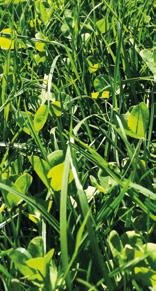
Its increased ground cover makes it hardy under pugging and the greater root mass seen on-farm allows AberMagic to tolerate reduced soil moisture.
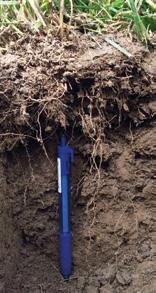
AberMagic is 5.0% higher in digestibility when compared to a standard ryegrass.
• Exceptional quality under grazing and silage mangement
• Dense tiller growth providing increased ground cover
• Deep roots for enduring persistence
• Superior late spring yields
Type Perennial Ryegrass
Ploidy Diploid Sowing Rate 18 - 20Kg/ha
Heading Date Late +19 days
Endophyte LE
Abermagic
Seasonal growth curve (kg DM/ha) of AberMagic AR1 compared with a leading NZ diploid ryegrass*
Seasonal growth curve (kg DM/ha) of AberMagic AR1 perennial ryegrass compared with a leading NZ diploid ryegrass*
Leading NZ diploid PRG AberMagic AR1
*Data taken from combined perennial ryegrass trials (partially irrigated) in Canterbury, New Zealand. Error bars show the LSD value when significant differences occurred (P<0.05).
10
and
provides a dense sward, with superior root mass. Aber High Sugar Grasses
Above ground
below ground: AberMagic
0 1000 1000 3000 4000 5000 Winter
Summer Autumn kg DM/ha
Early Spring Late Spring
Pasture
nitrogen
The pasture’s persistence and quality, combined with a longer grazing round, has enabled Jason to lower his nitrogen application rate without impacting production. Nitrogen is now only applied in extreme events to fill any genuine feed deficits, instead of relying on it all year.
“The thickness of the Germinal pasture is a key advantage, as it doesn’t go stalky. This means the pasture quality is easier to maintain, and we achieve higher yields,” says Jason, who uses Germinal’s AberGreen and AberMagic grasses with AberLasting and AberNormous clovers.
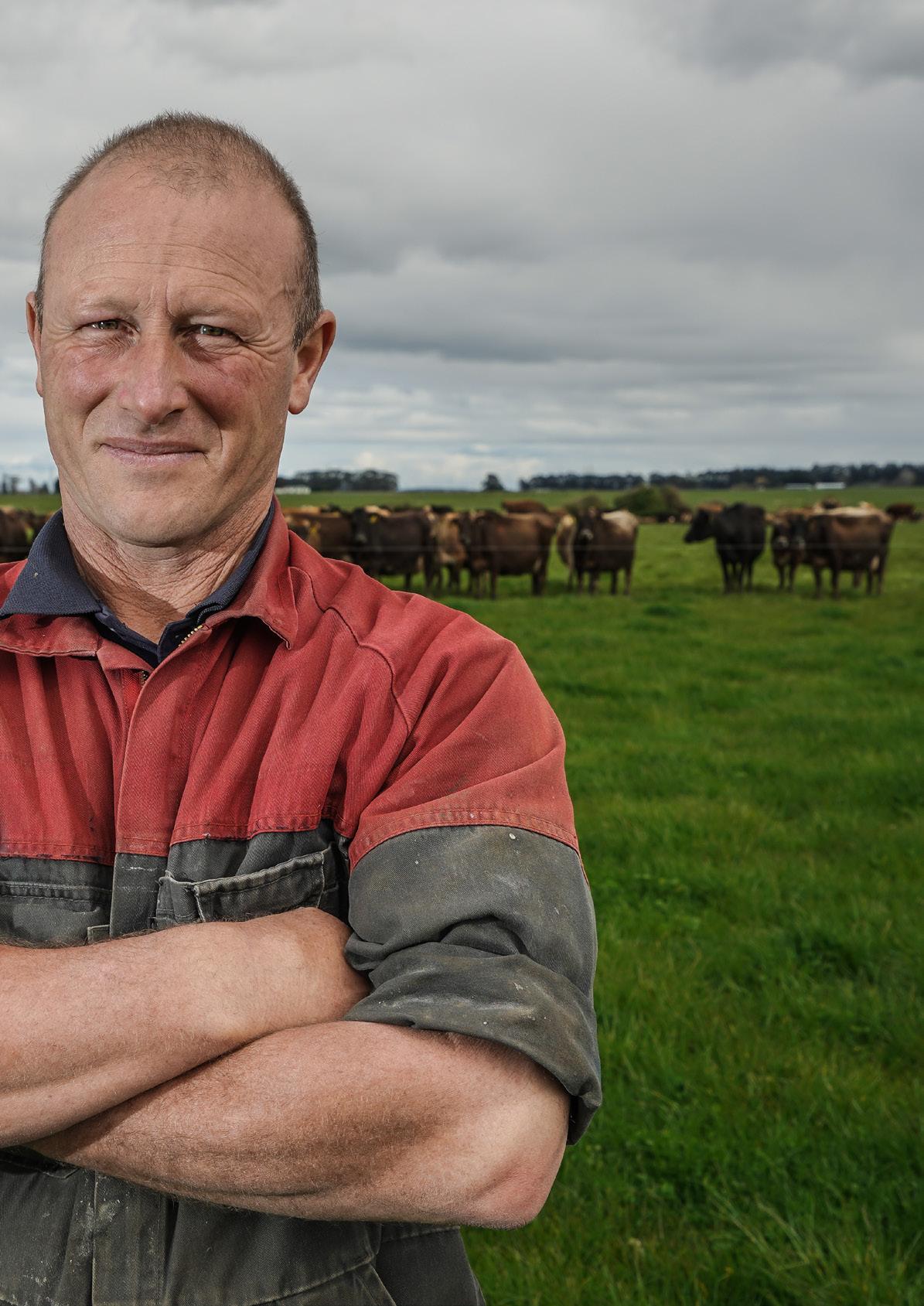
“When we do our silage, the contractors are usually surprised by how many bales they get. It is a really good leafy grass.”
The pasture is also able to withstand a longer 30-day rotational grazing system throughout the dairying season – compared to the standard 18 to 21-day rotation. The longer rotation reduces the number of grazings per year, enabling Jason to utilise clover for nitrogen fixing.
“Other grasses would get too stalky on a 30-day rotation, but the dense Germinal pasture manages to keep its quality despite the longer grazing period.”
Germinal’s climate-smart clover variety, AberLasting, features a superior root system that extends deeper below ground, providing greater grazing tolerance and a more robust source of natural nitrogen.
Meanwhile, Aber HSG – which is exclusive to Germinal is bred to produce more water-soluble carbohydrates (WSC) or sugar energy, delivering up to 17% more WSC than a conventional ryegrass.
“We could always tell when the cows were eating the High Sugar Grass, as the milk would increase.”
11 Aber High Sugar Grasses
Jason Erb milks 850 cows on his 363-hectare property in Otahuti, near Winton. Germinal’s Aber High Sugar Grass (HSG) and clovers have been used on the farm for nearly 20 years as part of a permanent pasture mix.
quality reduces farm’s reliance on applied
AberGain
AberGain is a tetraploid high sugar ryegrass, meaning it has been bred to contain a higher level of water-soluble carbohydrates, or sugars, than traditional perennial ryegrass.
Tetraploid perennial ryegrasses provide higher utilisation and increased production per hectare compared with diploid perennial ryegrasses, due to increased palatability and greater animal preference. AberGain provides all these benefits, and combined with its densely tillered nature, offers farmers real potential to lift animal production.
• First tetraploid High Sugar Grass released in New Zealand
• Densely tillered for improved grazing tolerance compared with conventional tetraploid ryegrasses
Type Perennial Ryegrass Ploidy Tetraploid Sowing Rate 25 - 30Kg/ha Heading Date Very Late +24 days Endophyte LE and AR1
Abergain
Seasonal growth curve (kg DM/ha) of AberGain AR1 perennial ryegrass compared with a leading NZ tetraploid ryegrass*
Seasonal growth curve (kg DM/ha) of AberGain AR1 compared with a leading NZ tetraploid perennial ryegrass*
*Data taken from combined perennial ryegrass trials (partially irrigated) in Canterbury, New Zealand. Error bars show the LSD value when significant differences occurred (P<0.05).
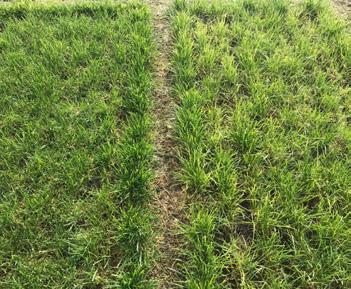
12
Superior tiller density of AberGain (left) is demonstrated compared with a standard NZ tetraploid perennial ryegrass (right), providing improved recovery following grazing and greater tolerance to severe grazing events.
Aber High Sugar Grasses
0 1000 2000 3000 4000 5000 6000 7000 8000
Leading
Winter Early Spring Late
Summer
kg DM/ha
NZ diploid PRG AberGain AR1
Spring
Autumn
Trying something new to improve farm productivity
Located just south of Edendale, Tim milks 500 cows on their 240-hectare property. The farm also has a wintering shed and runs around 80 beef cattle each year.
Three years ago, after a discussion with his seed representative, Tim decided to try a new pasture mix and incorporated Germinal’s Aber High Sugar Grass (HSG), AberGain, to improve soil fertility and production.
“The mix that we’re using seems to handle it really well. It’s been a nice, fast rotation and we’re getting a good establishment out of it,” says Tim McRae.
“It’s been relatively clean, we haven’t had to spray for weeds, and it’s allowed it to get off to a good start and then it just seems to grow and grow!”
Tim says they reseed approximately 10% of the farm each year and it’s a crucial part of their production. Around 40 hectares of Tim’s farm uses Aber HSG in its pasture mix and he says they’ve already seen great results in terms of growth.
The farm’s average grass growth was around 12 tonnes last year, in one of the toughest growing seasons, but the paddocks using Aber HSG grew roughly 14 tonnes.
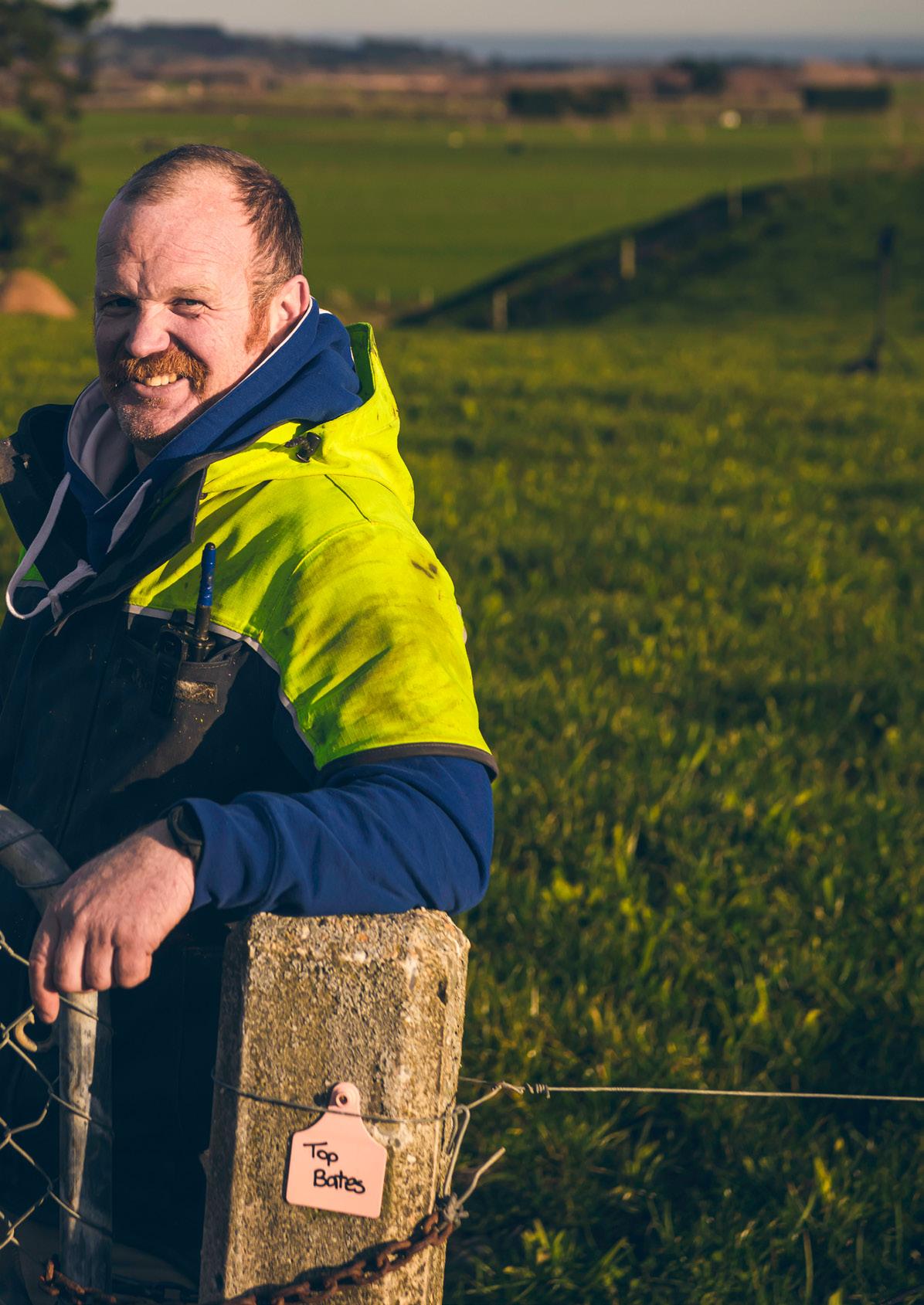
“It’s worth quite a bit of money when you quantify the grass,” says Tim. “It’s an extra two tonnes, and at 23 cents a kilo to buy, that’s another $460 a hectare. It’s well worth it, especially in a year where we’ve had pretty tough growing conditions.
“We haven’t got paddocks that are eight or nine years old yet, but from what we’ve seen so far it’s been really good and those three-year-old paddocks are performing very well.”
13 Aber High Sugar Grasses
Tim McRae’s Southland farm has been in his wife Justine’s family for more than 90 years, but the generational farmers aren’t afraid to try new technologies and products to get the best out of their land.
High sugar grasses a key component of dryland dairy farm
Germinal’s Aber High Sugar Grass (HSG) has been part of the farm’s permanent pasture mix for more than 10 years because it withstands the region’s cool and unpredictable climate.
“At the end of the day, we are in the business of growing grass first and producing milk second,” says Andrew.
“The quality and quantity of milk are only as good as the forage we’re providing our stock.”
Andrew and his family milk 1,500 cows on their 800-hectare property in the Canterbury foothills. The dryland farm is self-contained, which is unusual for Canterbury dairying. All stock is raised and wintered on-farm during winter and no supplement is imported.
“The self-contained approach gives us a good level of oversight and control, as we don’t have to rely on supplementary feed sources and all young stock is close at hand.
“We have a full picture of the entire operation at all times, helping us understand our environmental footprint and proactively manage issues.”
Innovative, cost-effective forages are an important part of Andrew’s strategy to lift animal performance while addressing environmental issues. Germinal’s AberGain, AberGreen and AberMagic – are key components of the farm’s self-contained feeding programme.
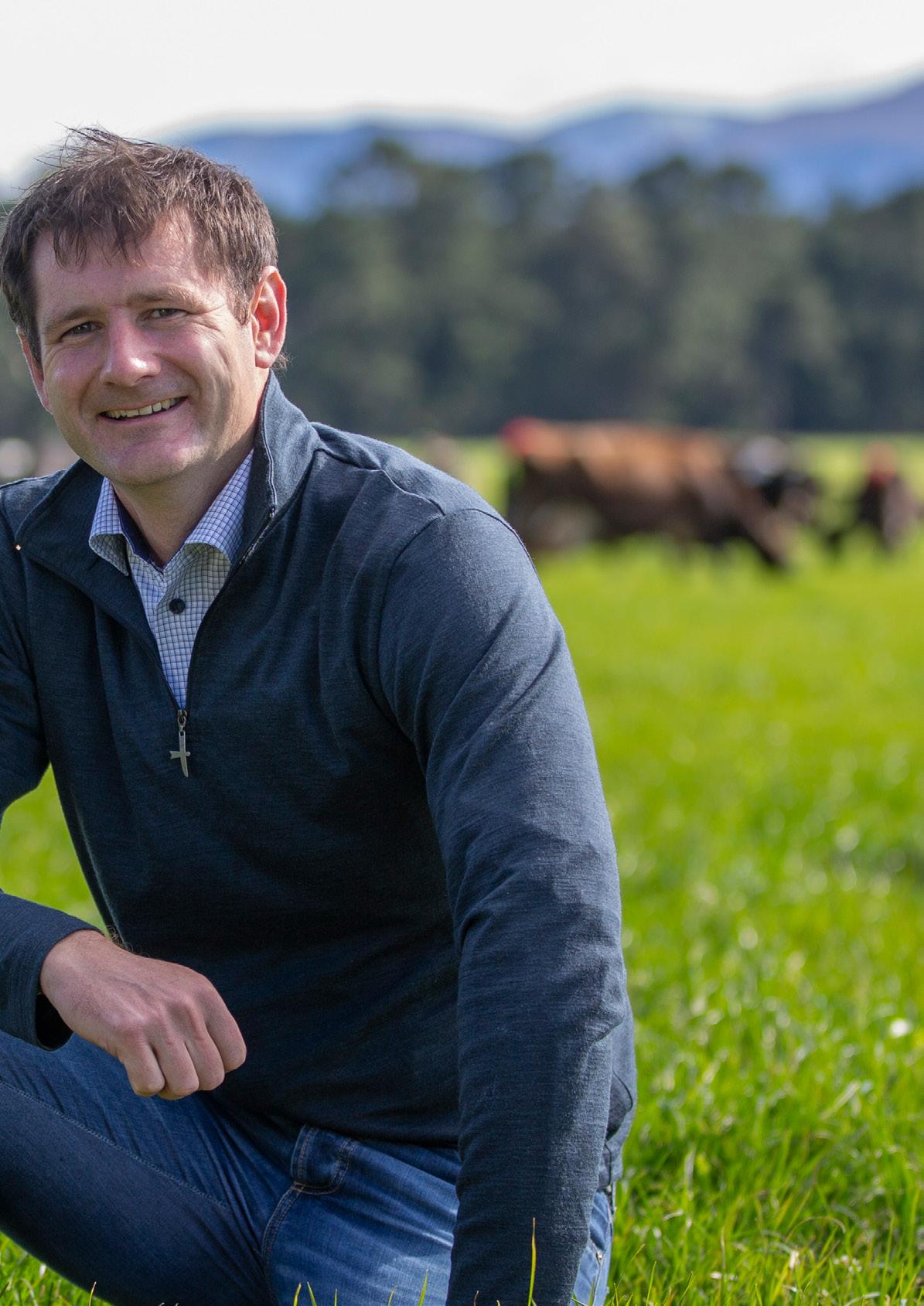
“We want to maximise the amount of metabolisable energy produced per hectare, and the cows milk better off the High Sugar Grass.
“Anecdotally, I would also say that the cattle prefer the High Sugar Grass over other varieties and we consistently achieve an even residual postgrazing.”
Aber High Sugar Grasses 14
Methven dairy farmer Andrew Barlass is turning his attention back to pasture – focusing on soil health, alternative forages and homegrown feed to improve farm profitability.
White clover
White clover offers many benefits for today’s sustainable livestock farming systems.
It can supply over 150kg nitrogen/ha, reducing the requirement and cost of fertiliser applications. Its strong creeping stolons make it tolerant of grazing and enables the plant to store energy and protein through winter into spring.
We know white clover will play an increasingly important role in New Zealand’s pastoral system as farmers seek to comply with more regulations and reduce their environmental footprint. Our clovers are bred for greater tolerance to environmental stressors, such as low temperatures or drought conditions.
Germinal has also created AberLasting, the world’s first clover hybrid crossing Caucasian and white clover. The innovative and climate-smart variety provides farmers with a more robust and resilient natural nitrogen fixer due to its superior root system. AberLasting is the only commercially available hybrid of this type, despite many attempts by international seed breeders and researchers.

Aber Clover range 15
AberLasting
Caucasian White Clover X
AberLasting is the first ever super clover – developed to incorporate the benefits of Caucasian clover with white clover, giving farmers the best of both.
• Stoloniferous (surface and underground runners) and rhizomatous (larger and deeper underground stem) root system
• Increased persistence from rhizomatous root system
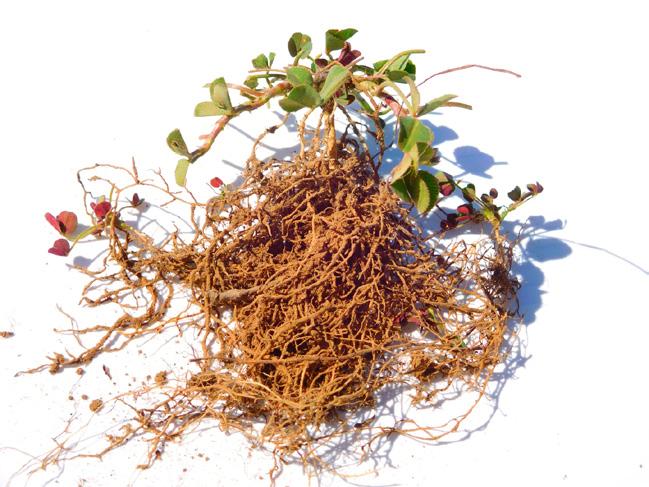
• Faster establishment than Caucasian clover
• More drought tolerant than white clover – maintained leaf water content for one week longer than white clover when without water10
• Excellent cold tolerance
• Can withstand heavy grazing and recovers quicker than white clover
• Nitrogen fixation comparable with white clover
• Aber production paddocks have seen tolerance to Clover Root Weevil over second and third years under pressure
Parent plant
New plant
New plant
Omarama demonstration site in Otago: six month old AberLasting (above) planted in October 2015 into an unfertile, dry and bony site. The plant is expressing itself similar to a Caucasian clover below ground, with new plants growing off the parent plant rhizomes. These new plants are then establishing tap roots measured down to at least 200 mm.
16
Aber Clover range
Boosting pasture production with AberLasting
Gavin's 2,200-hectare property in Clarks Junction is 500 metres above sea level. Temperatures rarely reach double figures in winter and average yearly rainfall is only around 500mm, due to long dry periods in summer.
Germinal’s AberLasting clover has been part of the farm’s permanent pasture mix since 2014, which is currently planted on 490 hectares. The aim is to provide increased tolerance to weather extremes and boost pasture production for Gavin’s 6,500 ewes and 300 cows.
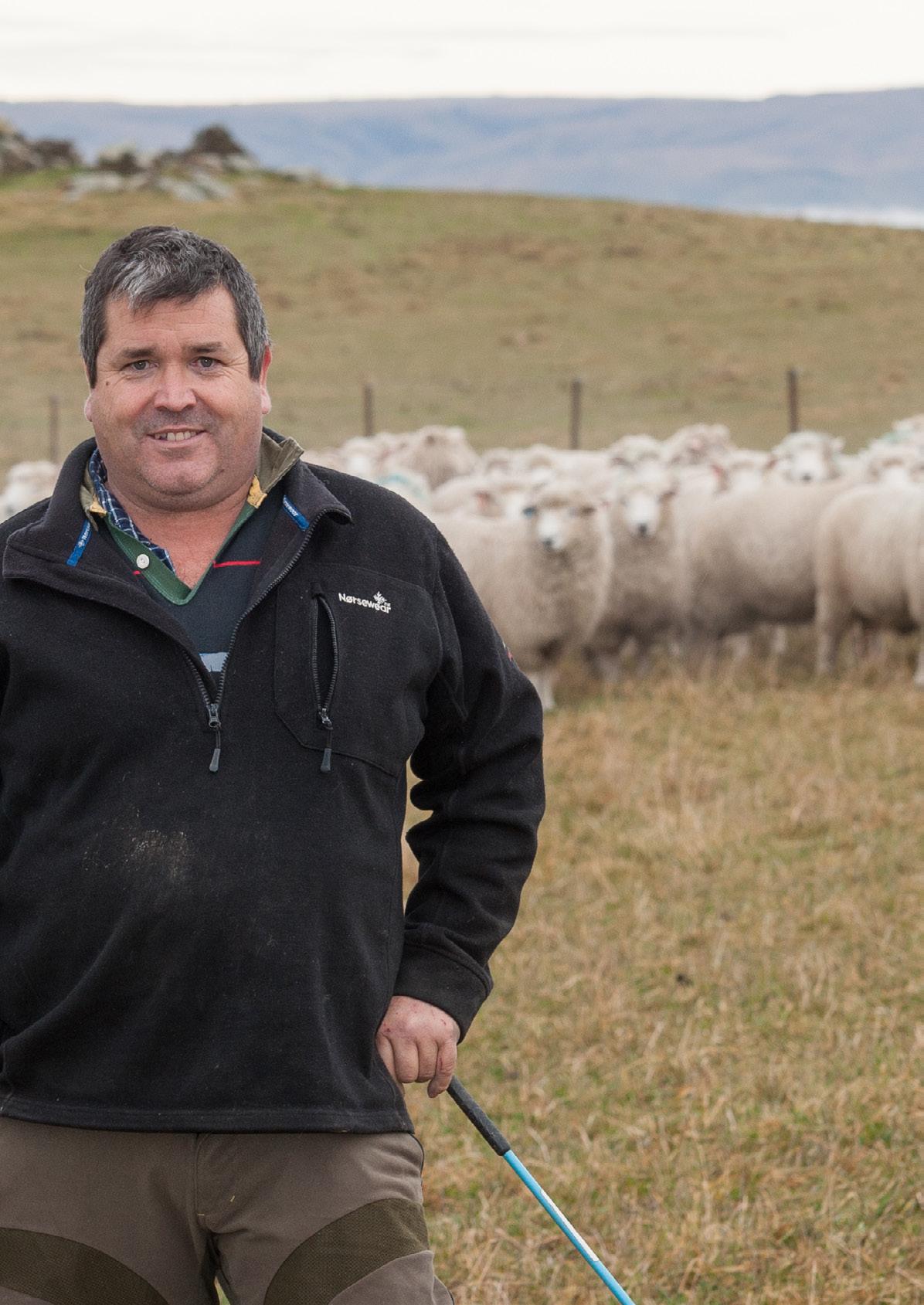
“The first time AberLasting was planted I was driving down the farm lane and saw that the original pasture mix was dried off on one side, while the AberLasting paddocks were still white with clover on the other – and both were grazed at the same time,” says Gavin. “Paddocks with AberLasting grew another two weeks into the dry.”
Gavin has also seen a marked improvement in lamb weights since using AberLasting alongside red clover varieties.
Touted as the first ‘super clover’, AberLasting is New Zealand’s first successful cross of Caucasian and white clovers. It can withstand overnight temperatures of -30°C, which would wipe out 70% of other white clover varieties. AberLasting also maintained leaf water content for one week longer than traditional white clover when completely without water in a drought tolerance experiment.
17 Aber Clover range
Managing the environmental extremes of New Zealand's Otago region, renowned for its low temperatures and drought conditions, is a significant challenge for sheep and beef farmer Gavin Nichol.
AberDance
Medium leaf
AberDance is a persistent white clover that will perform under a range of grazing managements.
It’s bred from winter-hardy material to provide flexibility for various farming systems. It offers high yields and shows good survival in systems ranging from continuous sheep grazing, through to rotational sheep and cattle grazing.
AberDance should be sown in a pasture mix at a rate of 2-5 kg/ha.
• Use in sheep or deer systems mixed with AberLasting to provide a resilient clover mix
• Use in dairy and cattle systems mixed with AberNormous for the ideal clover balance
AberNormous
Large leaf
AberNormous is a high yielding white clover with dense stolon growth for greater persistency.
It’s versatile and suited to rotational dairy or cattle grazing and high production silage pastures. It has good stress and grazing tolerance, while retaining high digestibility throughout the season.
AberNormous should be sown in a pasture mix at a rate of 2-5 kg/ha.
• Use in dairy and cattle systems mixed with AberDance or AberLasting for the ideal clover balance
Aber Clover range 18
Red clover
Red clover is a high-quality, cost-effective source of homegrown protein, with the capacity to reduce reliance on bought-in feed. It has a protein content of 18-20%, making red clover an attractive option for feeding livestock.
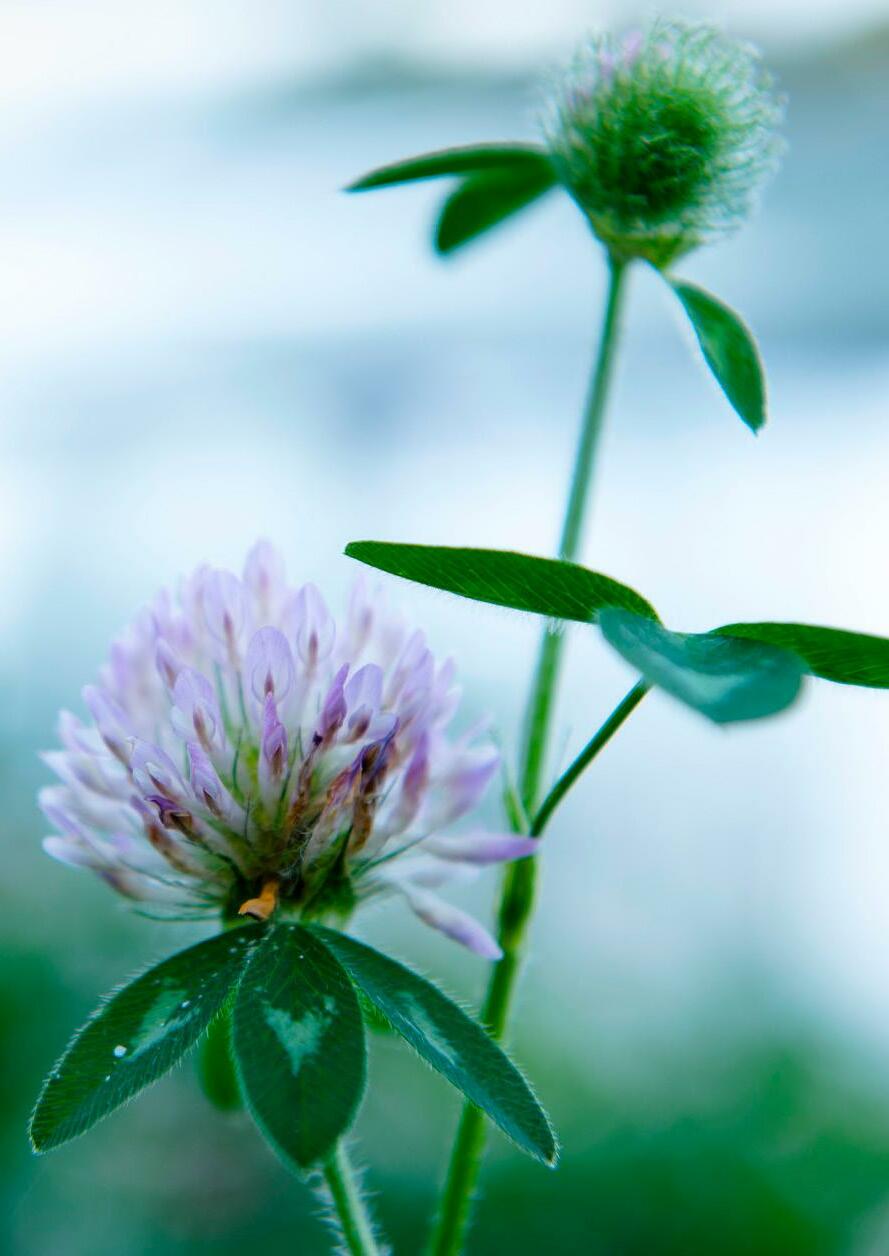
It also has impressive environmental credentials with its ability to fix nitrogen at a rate of 150kg N/ha, releasing it to other plants and reducing the need for synthetic nitrogen fertiliser.
Red clover has high levels of Polyphenol Oxidase (PPO). PPO has been shown to slow the breakdown of plant nitrogen in the rumen, meaning animals that are fed red clover have more time to capture plant nitrogen in the rumen and convert it to protein that can be utilised by humans, with less emitted as ammonia and methane.
We are excited about all that red clover has to offer New Zealand farmers. We are also breeding new types of red clover with the persistency of white clover under grazing, but with protein protection in the rumen. These varieties will continue to improve protein availability for grazing animals while reducing nitrogenous emissions.
Aber Clover range 19
AberClaret
Red clover can either be grown as part of a pasture mix or as a monoculture, primarily to provide high yields of protein-rich forage. AberClaret is the first of a new generation of red clovers bred for greater persistency and grazing tolerance.
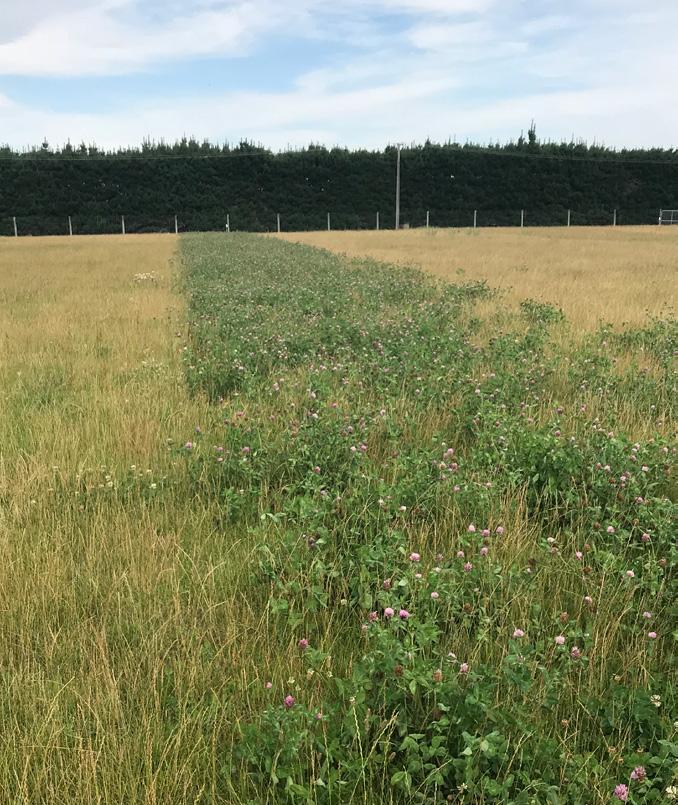
AberClaret has a semi-upright growth habit and is suitable for a range of farming systems. It yields well under grazing and conservation, and it has value as a break crop that improves soil structure and fertility.
AberClaret should be sown at a rate of 4-6 kg/ha in a pasture mix or 12-14 kg/ha in a pure sward.
Aber Clover range
20
A strip of AberClaret red clover in a dryland sheep pasture in Canterbury
To view our selection of brochures and technical guides please visit our website: germinal.co.nz @GerminalNZ Find out more Contact: Germinal New Zealand 0800 171 825 enquiries@germinal.co.nz Aber® is a registered trademark of Germinal Holdings Ltd. Germinal products are provided subject to the terms and conditions of purchasing, which are part of the labelling and purchase documents. The information
publication
information
this publication
be accurate,
liability
negligence
actions
this publication. ©
publication
potential
in this
is general in nature only. Although the
in
is believed to
no
(whether as a result of
or otherwise) is accepted for any loss of any kind that may arise from
based on the contents of
2022, Germinal Holdings Limited. No part of this
can be reproduced without prior written consent from Germinal Holdings Limited. The farm results achieved by testimonial farmers are illustrative only of the
for gains when using Aber products. All testimonial figures have been provided and approved by each testimonial farmer.
Germinal NZ Limited is committed to an environmentally sustainable future. This brochure is made from entirely recyclable products. Please recycle this brochure. Germinal New Zealand Limited 144 Tancred Street, Ashburton 7700, New Zealand 0800 171 825 enquiries@germinal.co.nz germinal.co.nz

















